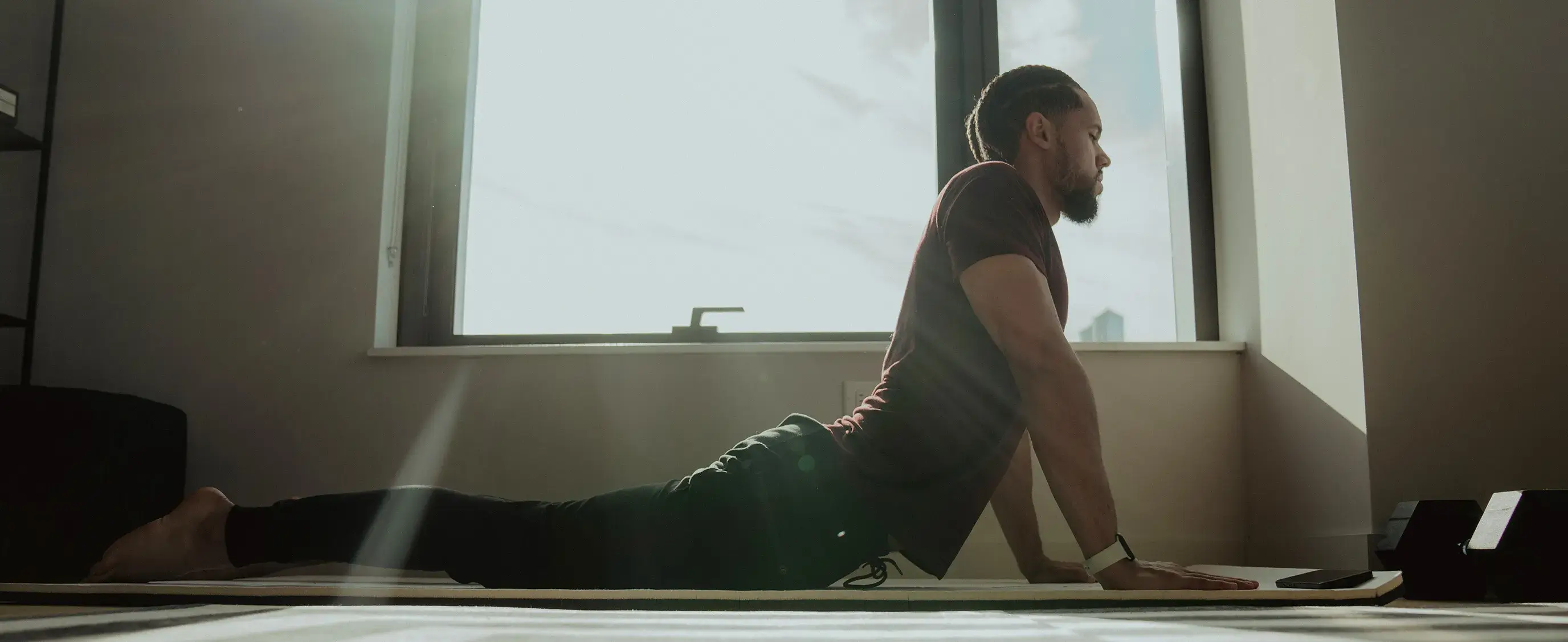When was the last time you thought about your spine? While it may seem like an out-of-sight, out-of-mind part of the body, your spine is crucial to your health and well-being. Your spine's thoracic region (the upper and middle back) houses 12 vertebrae (T1-T12) and is responsible for an extensive range of motion.
Feeling stiff or struggling to move your upper body could be due to a lack of thoracic mobility. This blog will explore thoracic mobility exercises, how they can help you improve your health, and how the Pliability mobility app can help you incorporate them into your routine.
What Is the Thoracic Spine?

The thoracic spine, or the middle segment, is often overlooked but plays a crucial role in supporting the body, protecting the spinal cord, and allowing movement. The thoracic spine’s twelve vertebrae numbered T1 to T12, also have a special connection to posture and mobility.
The thoracic spine is the most stable of all the spinal regions due to its many connections to the sternum and ribcage. This stability allows for a certain degree of mobility while protecting the internal organs in the thoracic cavity, such as the:
- Heart
- Lungs
Thoracic Spine Role
While the thoracic spine doesn’t move nearly as much as the cervical (neck) and lumbar (lower back) regions, it is essential for:
- Overall spinal health
- Mobility
The thoracic spine acts as a connector between the cervical and lumbar regions. As such, it can affect how well the neck and lower back function, particularly during rotational movements. The thoracic spine can also influence posture. A stiff thoracic spine can lead to poor posture as the body compensates for limited movement. This can result in a hunchback appearance (excessive kyphosis) or a straight back (lack of normal thoracic curvature).
Postural Benefits
Both postural issues can negatively affect the neck and lumbar spine, leading to pain and dysfunction. Improving thoracic spine mobility can help:
- Reverse these postural issues
- Restore normal function to the neck and low back
How the Thoracic Spine Moves
The thoracic spine’s unique structure allows for motion in all planes:
- Rotation
- Flexion/extension
- Lateral flexion
The ribs block excessive lateral flexion from occurring. Sagittal plane flexion and extension is also available in the region of the thoracic spine. Neumann (2010) states that the normal adult demonstrates 40° to 45° of natural kyphosis while standing.
Thoracic Spine Range
The thoracic spine can flex from neutral to approximately 35° of additional flexion. Thus, it can demonstrate up to 75° of full flexion. It only moves 20° to 25° of extension. If the average position is 40°, the fully extended position is still 15 -20° of flexion.
When the term extension is used about the thoracic spine, the meaning is a reduction in relative flexion. While there may not be a true extension of the thoracic spine, this reduction in flexion is essential for the movement of the scapula and arm. To move the arm into full shoulder flexion requires the thoracic spine to move into extension.
Scapula Movement
During flexion, the scapula upwardly rotates and posteriorly tilts on the rib cage, encouraging thoracic extension.
If the thoracic spine cannot extend, the scapula cannot posteriorly tilt, and the glenohumeral joint cannot get to full flexion, which increases the risk of shoulder impingement.
What Happens When Thoracic Spine Mobility Is Lacking?
While the thoracic spine is designed for rotation, many people lack adequate thoracic spine mobility, especially rotational movement. Research has shown that individuals with lower back pain tend to have reduced thoracic spine mobility.
Lumbar Spine Stress
This is concerning because the lumbar spine (lower back) is not designed to rotate. It is stable and should resist rotational forces. When the thoracic spine does not rotate well enough, the lumbar spine is forced to rotate more, which could contribute to low back pain or injury.
As Bogduk (2005) describes, more than 3° rotation at any lumbar segment could damage the articular surface and tear collagen fibers comprising each vertebra's disc.
Muscles That Influence Thoracic Spine Mobility
Many muscles influence the movement of the thoracic spine, but the most notable are the following:
- Spinal erectors
- Rhomboids
- Middle trapezius
While these muscles have essential functions, they are rarely mechanically shortened and overactive. The goal of improving thoracic motion is not to release and lengthen these muscles. Foam rolling the thoracic spine is incredibly valuable for mobilizing the vertebrae specifically.
Tight Muscles
The pectorals and the latissimus dorsi are short and tight muscles that control thoracic spine motion. If a movement assessment indicates they are mechanically short, these muscles usually need foam rolling and static stretching.
Related Reading
- Ankle Mobility Exercises
- Knee Mobility Exercises
- Shoulder Mobility Exercises
- Hip Mobility Exercises
- How To Improve Flexibility
- Wrist Mobility Exercises
- Stretch Before Or After Workout
- Leg Mobility Exercises
- Best Stretching Routine
- Mobility Exercises For Beginners
- Mobility Exercises For Athlete
- Lower Body Mobility Exercises
- Back Mobility Exercises
Why Is Thoracic Spine Mobility Important?
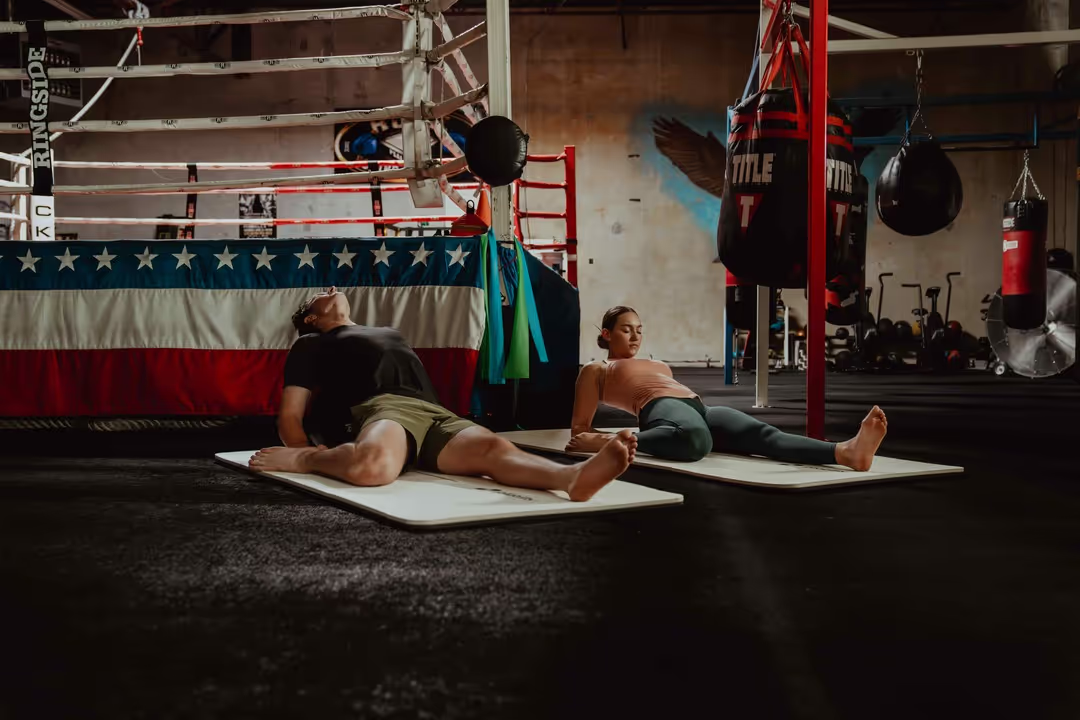
Adequate mobility of the thoracic spine is crucial for everyday life. After all, we aren’t robotic humans that move linearly. The thoracic spine makes all movements possible, including twisting and reaching into a cupboard, bending and rolling around in the garden, getting out of a car, and getting out of bed.
How Does Thoracic Mobility Impact Posture?
Mobility of the T-spine is essential for maintaining optimal posture, which in turn allows for the optimal functioning of organs while reducing pressure on the lower back and joints of the legs. What’s more, research has found a link between thoracic spine dysfunction and injuries of the neck and shoulders.
Likewise, what happens above affects below. The relationship of the thoracic spine to the pelvis is vital in addressing abdominal and pelvic floor dysfunction, partly because the pelvic floor muscles are connected to the thorax muscles via connective tissue.
How Does Thoracic Mobility Impact Breathing?
Poor alignment and mobility in the thoracic spine and pelvic region results in:
- Decreased function
- Limited breathing capacity
- Excess tension and more intra-abdominal pressure can contribute to or worsen conditions like diastasis recti, pelvic floor dysfunction, and prolapse
Limited thoracic mobility reduces respiratory function, which can cause problems for the pelvic floor muscles.
How Does Thoracic Mobility Impact Athletic Performance?
Increasing thoracic mobility enhances dynamic alignment, functional movement, and exercise execution, resulting in a better workout that adequately transfers load through the body while minimizing the risk of injury.
The thoracic spine is the link between your upper and lower body. It’s essential for almost every move you make. Keeping it supple and strong is key to maintaining your function.
Performance-Focused Yoga App for Enhanced Mobility and Recovery
Pliability offers a fresh take on yoga tailored for performance-oriented individuals and athletes. Our app features a vast library of high-quality videos designed to:
- Improve flexibility
- Aid recovery
- Reduce pain
- Enhance range of motion
Pliability provides daily-updated custom mobility programs for those interested in optimizing their health and fitness. It also includes a unique body-scanning feature to pinpoint mobility issues. If you're feeling limited by pain or your ability to move, Pliability aims to complement your fitness routine and help you move better.
Free Trial
Sign up today for seven days free on iPhone, iPad, Android, or our website to improve flexibility, aid recovery, reduce pain, and enhance range of motion with our mobility app.
What Causes Poor Thoracic Mobility?
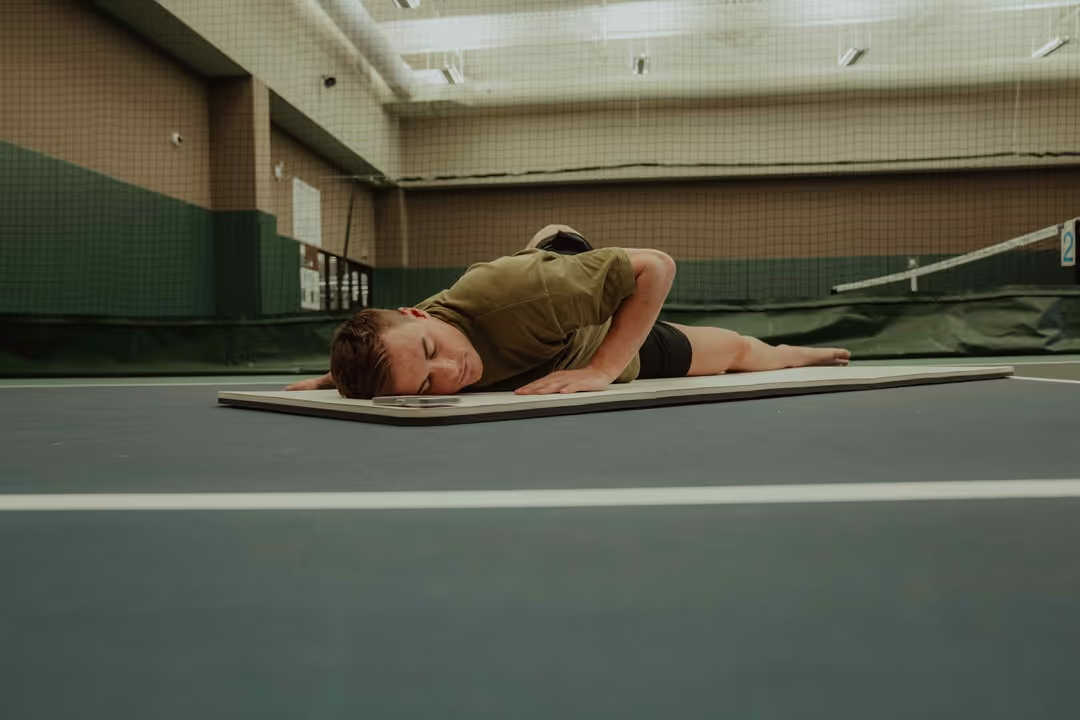
Mobility training expert Dr. Adam Beck, DPT, calls the thoracic spine the “neglected middle child of the spine.” It’s easy to see why. Most people know that the lower back and cervical spine can become stiff and immobile with a lack of movement or repetitive postures.
Many overlook that the thoracic spine, or upper back, can also get stiff and negatively impact performance and function. If you don’t use it, you lose it. Dr. Beck attributes thoracic spine immobility to years of sitting in school, sitting for work, lack of play, lazy/lousy posture, and upper back weakness that all lead to:
- Stiffness
- Immobility
Modern Lifestyle
This may seem alarming, especially given that we spend most of our days sitting in front of a screen for work and then moving to another screen to relax, not to mention that smartphone that never leaves our side.
The consensus is that a lack of movement in daily life has increased the dreaded slouch position.
Understanding Thoracic Stiffness and Immobility
There are a few reasons for thoracic immobility. Repetitive postures and movements that lead to rounding forward can lead to a stiff thoracic spine. This may include:
- A sedentary lifestyle
- Working at a desk
- Hunching over tech devices
Sports or activities that require you to bend forward often (think cycling) or keep an erect posture with little movement (like ballet) can also contribute.
Common Causes
Thoracic immobility is also prevalent in new parents or caregivers due to carrying and feeding babies. If your posture tends toward kyphosis, you will likely have limited mobility in your thoracic spine.
The Importance of Thoracic Mobility for Athletes
Many individuals suffer from a tight thoracic spine, possibly due to bad posture. A tight thoracic spine can significantly impact an athlete’s performance in various ways. Good running form involves maintaining an upright posture.
Sport Impact
If the thoracic spine lacks mobility or is locked up, this may hinder the efficiency of the running gait. It also may leave one susceptible to injuries where tight muscles or joints become injured from quick movements. An example includes mountain biking, where the shoulders and upper back must be loose to absorb the shock and react accordingly.
Another example involves weightlifting. Most major weightlifting moves require a neutral spine and good posture. If the thoracic spine becomes locked up, it makes one more susceptible to shoulder injuries.
Common Symptoms of Poor Thoracic Mobility

Poor thoracic mobility can lead to various symptoms that can negatively impact daily life. The most common signs of thoracic mobility issues include:
- Upper Back Pain
- Shoulder StiffnessDifficulty Rotating or Extending the Spine
- Poor Posture
Upper Back Pain
Thoracic spine pain can feel like a dull ache or a sharp jolt. It can make sleeping difficult, as certain positions aggravate upper back pain. This can also make it challenging to perform daily activities, particularly those that involve:
- Twisting
- Lifting
- Reaching
Shoulder Stiffness
The shoulders rely on the thoracic spine for movement and stability. When the thoracic spine is restricted, it can lead to decreased shoulder mobility and stiffness. This can make it difficult to lift the arms, reach overhead, or perform daily tasks like getting dressed.
Difficulty Rotating or Extending the Spine
The thoracic spine is designed for rotation and extension. When mobility is poor, activities that involve these movements can be:
- Painful
- Restricted
Poor thoracic mobility can make it challenging to perform baseball swings, golf, or even simple tasks like getting into a car.
Poor Posture
Thoracic mobility is vital for maintaining good posture. When the thoracic spine is stiff, it can lead to compensatory changes in posture, particularly a forward shoulder posture and an exaggerated or flattened curve in the upper back.
These changes can be visualized and also cause a host of symptoms like:
- Pain
- Stiffness
3 Thoracic Spine Assessments
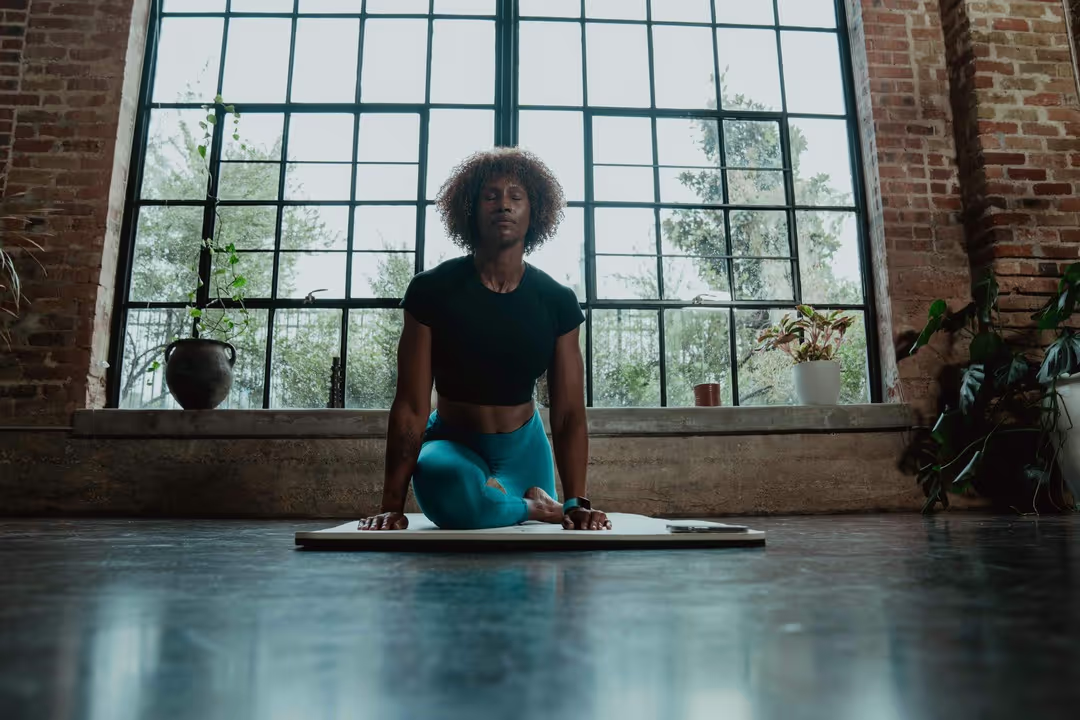
1. Overhead Squat Assessment: The First Step in Testing Thoracic Mobility
The Overhead Squat Assessment is an excellent starting point for assessing thoracic mobility. The test begins to uncover movement restrictions within the thoracic spine. For this assessment, a client performs a squat with their arms fully elevated above their head while the tester observes the client’s movement pattern from the side.
The client should be able to achieve full shoulder flexion of 180 degrees while maintaining a neutral pelvis and lumbar spine. Any deviations or compensatory patterns may indicate limited thoracic mobility.
2. Supine Flexion Assessment: A Clear Picture of Thoracic Mobility
The Supine Flexion Assessment gives a clearer understanding of any restrictions impacting thoracic mobility. Starting in a supine position, the client will lie flat on their back and, with their arms elevated, attempt to reach their arms overhead to the floor.
This assessment tests the ability of the thoracic spine to extend while lengthening the muscles that attach to the shoulder. Since the client is lying on their back, no stabilization is required. This position allows the muscles to relax and provide a more accurate indication of movement.
Mobility Test
During the assessment, the client should be able to reach their arms to the floor while maintaining a neutral lumbar spine. If the client cannot reach the floor, or if they exhibit compensatory patterns such as lifting the rib cage to reach their arms, it may indicate limited thoracic mobility.
3. Thoracic Rotation Assessment: Uncovering Restrictions in Rotation
The Thoracic Rotation Assessment will help identify whether there is a rotation restriction. Since thoracic rotation is so important, a rotation deficit may contribute to a lack of extension and impede shoulder movement during functional actives such as:
- Running
- Throwing
- Swimming
Assessment Position
To perform this assessment, the client gets into a quadruped position on their:
- Hands
- Knees
Next, the client sits their hips back to their heels and lowers their forearms to the ground. From here, the client places one hand behind the head and attempts to rotate just the thoracic spine in the direction of that hand.
Rotation Test
You can repeat this on the other side. The client should demonstrate approximately 35 degrees of rotation in each direction from this position. Using a specialized tool to measure this is optional, as one can come close enough using a visual assessment.
Picture a 45-degree angle, and the client should get close to it. Symmetry is imperative through the spine, so pay attention to whether the client can rotate the same amount in both directions.
How Can You Improve Thoracic Mobility?

To improve your thoracic mobility, the most important thing you can do is move more. Daily, consistent mobility exercises and stretching are essential for improving stiffness. Experiment with spreading exercises throughout the day or setting aside a specific time
Soft Tissue Treatments for Thoracic Mobility
Thoracic mobility may also be improved through soft tissue treatments like massage therapy or modalities such as:
- Yamuna Body Rolling
- The Melt Method.
- Yoga Tune-Up balls
Pay Attention to Your Form
Paying attention to form is critical. Do your best to avoid compensating with excess movement from the:
- Lower back
- Pelvis
Engage your core to stabilize those areas when attempting to mobilize the thoracic spine. Modifications can help stabilize the pelvis if needed, and it may be worth hiring a personal trainer, physical therapist, or Pilates instructor for a few initial sessions to ensure your movement is coming from the right place.
Breathe Deeply
Taking full, deep, diaphragmatic breaths can help maintain the respiratory function of your:
- Thoracic spine
- Rib cage
Aim for inhaling a full breath that expands your ribs outward 360 degrees.
Warm Up with Dynamic Movements
Think about how you warm up before exercise. Starting with dynamic movements like a bodyweight lunge with a twist before static stretching is a beneficial way to increase mobility.
Enhance Your Mobility and Performance with Pliability
If you're feeling limited by pain or the ability to move, Pliability aims to complement your fitness routine and help you move better.
Sign up today to get 7 days absolutely for free on iPhone, iPad, Android, or our website to improve flexibility, aid recovery, reduce pain, and enhance range of motion with our mobility app.
Related Reading
- Golf Mobility Exercises
- Upper Body Mobility Exercises
- Mobility Exercises For Runners
- Can You Over Stretch
- Squat Mobility Exercises
- Functional Mobility Exercises
- Why Stretching Is Important
- Foot Mobility Exercises
- Arm Mobility Exercises
- Hamstring Mobility Exercises
- Elbow Mobility Exercises
- Rotator Cuff Mobility Exercises
- Bed Mobility Exercises
- What Are Mobility Exercises
- Full Body Mobility Exercises
16 Best Thoracic Mobility Exercises
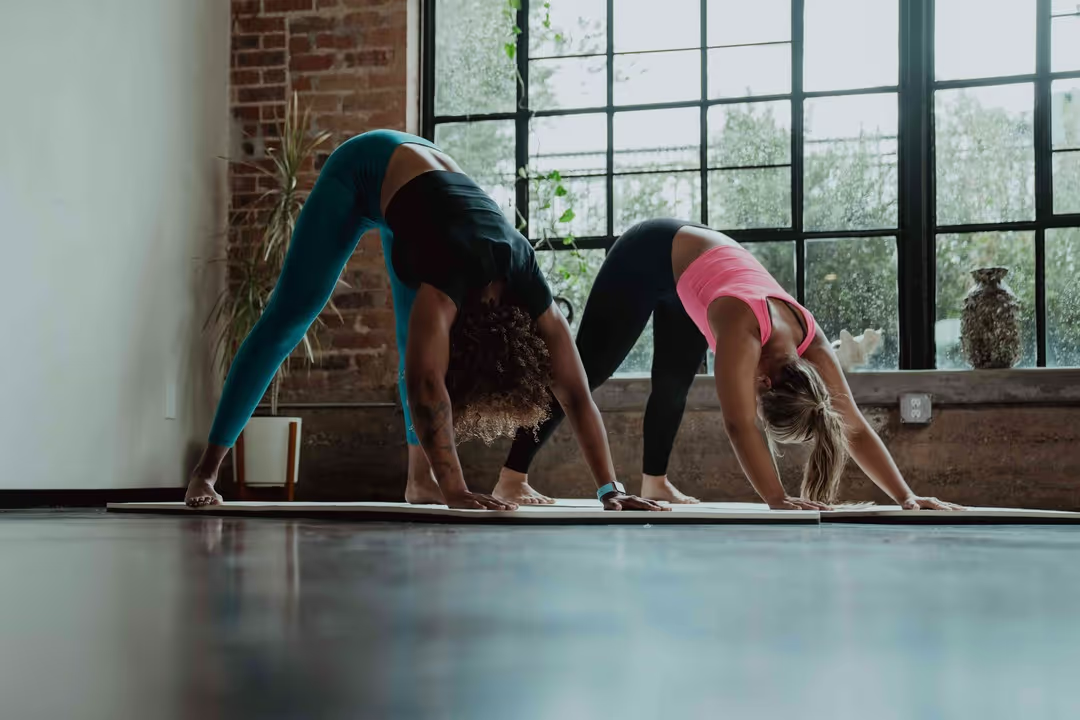
1. Foam Roller Thoracic Extension: A Beginner-Friendly Mobility Exercise
The foam roller thoracic extension is one of the most straightforward exercises to improve thoracic mobility. You only need a foam roller, space, and a few moments to mobilize.
Why We Like It
This exercise is simple to learn and effective at loosening the mid-back (thoracic spine) before performing extensions.
How to do it
- Face up with a foam roller positioned at your mid-back, knees bent, and feet flat on the floor.
- Cross your arms on your chest or place your hands behind your head to cradle your neck.
- Gently roll your upper body along the foam roller, targeting your mid-to-lower back muscles with control.
- Repeat for the desired sets and reps or duration.
Pro tip: Sneak in foam rolling your t-spine to loosen up the upper back before performing extensions.
2. Cat-Cow Pose: Improve Thoracic Spine Mobility Anywhere
The cat-cow pose is an easy movement for improving mobility in your spine. In extension (think of pulling your chest to the floor), you'll focus on the cow portion of this movement. In flexion (think of pushing your upper back to the ceiling), you'll focus on the cat portion.
Why We Like It
This exercise also helps mobility of the lower back (lumbar spine) and neck (cervical spine), creating an easy-to-do movement that can be performed anywhere, at any time. Working out of a quadruped position improves core stability!
How to do it
- Place your hands under your shoulders and your knees under your hips.
- Inhale deeply, then exhale and push your upper back towards the ceiling while pulling your hips to your abs. This is the cat pose.
- Inhale deeply while lifting your chest and head, and lower your abs and rib cage to the floor. This is the cow pose.
- Repeat for the desired sets and reps or duration.
Pro tip: Slow and controlled is the name of the game here. Let rhythm be your friend as you move through the cat-cow pose.
3. Thread the Needle: A Simple Exercise to Improve Thoracic Rotation
Thread the needle is an easy exercise to incorporate thoracic rotation into your routine. This exercise improves thoracic mobility and targets the shoulders, lats, rhomboids, rotator cuff, traps, and serratus anterior. Perform it with control to feel your thoracic spine muscles lengthen.
How to do it
- Place your hands under your shoulders and your knees under your hips.
- Take your right arm and reach under and across your torso, rotating until the right shoulder reaches the floor. You should feel a nice shoulder, tricep, lat, and upper back stretch.
- Slowly rotate back to the starting position.
- Repeat on the opposite side by taking your left arm, reaching under and across your torso, and rotating until the left shoulder reaches the floor. 5. Repeat for the desired sets and reps or duration.
Pro tip: If you include threading the needle in your warm-up, perform multiple sets and reps with shorter holds. If you thread the needle in a cooldown, perform longer holds using fewer reps.
4. Iron Cross Stretch: Improve Rotational Mobility With a Simple Floor Exercise
The iron cross stretch improves rotational mobility. You perform it by lying on your back, rotating your lower thoracic and lumbar spine while engaging your abs. This stretch focuses on your active range of motion (ROM).
How to do it
- Lying face up on the floor, bring your arms out to your sides, making a "T" shape.
- Lift your left leg and slowly rotate it across your body toward your right side, lightly tapping your foot on the floor. You should feel a nice twist in your mid-back and hips.
- Squeeze your abs and bring your left leg back to the starting position.
- Switch sides and repeat for the desired sets and reps or duration.
Pro tip: Keep your upper back flat on the floor while rotating.
5. Deep Squat Hold with Thoracic Reach: Improve Thoracic Mobility and More
You know the benefits of deep squats. To save time during your warm-up, add the deep squat with thoracic reach to improve ankle, hip, thoracic spine, and shoulder mobility. It's an efficient exercise for multiple gains.
How to do it
- Position your feet hip-width apart.
- Slowly descend into a balanced squat and hold this position.
- Grab the bottoms of your toes with both hands to anchor the body.
- Reach your right arm up, keeping the thumb pointed back behind you and your arm straight, creating a half "Y."
- Return your right arm to the starting position.
- Reach your left arm up, keeping the thumb pointed back behind you and your arm straight, creating a half "Y."
- Return your left arm to the starting position.
- Repeat for the desired sets and reps or hold time.
Pro tip: Keep your eyes glued to the reaching hand to enhance your thoracic rotation.
6. Downward Dog Stretch: Mobilize Your Upper Body with This Common Yoga Pose
The downward dog stretch mobilizes and activates your upper back, forearms, calves, and shoulders, engaging the thoracic spine muscles. Try long holds or sets of 8 to 10 reps with shorter holds to prepare for your push-pull workout.
How to do it
- Start in a pushup position, hands directly under your shoulders and your back flat.
- Push your chest up and then back toward your knees.
- Hold for a breath or two, feeling your arms reaching through the floor.
- Feel your arms and upper back muscles squeeze as you hold the stretch.
- Return to the starting position.
- Repeat for the desired sets and reps or duration.
7. Side Plank: Build Stability in Your Thoracic Spine With This Core Exercise
A side plank enhances t-spine strength by engaging your core, shoulders, and upper back to resist spine bending. For an extra challenge, try placing one of the best dumbbells on your obliques for added resistance.
How to do it
- Begin the movement on your right side by placing your right elbow underneath your right shoulder.
- Lift your hips until your body is in a straight line.
- Squeeze your upper back and brace your abs. Hold for a while. Slowly lower yourself back down to the floor.
- Switch to the left side of your body and repeat the same steps.
- Repeat for the desired sets and reps or hold time.
Pro tip: Here's a cue I use: push the top pant pocket to the ceiling to help hold a strong side plank.
8. Kettlebell Windmill: A Unique Exercise to Develop Thoracic Mobility
The kettlebell windmill helps develop t-spine and shoulder stability while building strong obliques as you brace your core. Use it as a prep for overhead workouts or an ab circuit accessory exercise. And if you need the required equipment, consider picking up one of our recommendations for the best kettlebells.
How to do it
- Stand with your feet slightly wider than the hip-width apart and press a kettlebell overhead using your right arm.
- Keeping your right arm straight, shift your weight onto the left side and slowly descend by lowering your left arm along the inside of your left leg with your palm facing up. Focus on keeping contact with your hand and leg.
- Slowly stand back up to the starting position.
- Repeat for the desired sets and reps or hold time, then switch to the left side.
Pro tip: Always keep your eyes focused on the kettlebell to improve your balance and control during each repetition.
9. Child's Pose with an Exercise Ball: Open Your Chest with This Supported Twist
This exercise will open your chest while maintaining support for the entire arm throughout the twist.
How to do it
- Kneel on the floor facing an exercise ball.
- Sit back on your heels and open the knees wider than your hips.
- Place both hands on the exercise ball and roll it forward until you bend forward as if in a child’s pose. Bring your chest as low as you can toward your knees without pain in the shoulder.
- Breathe in this position for two deep breaths. Then, keeping your hands on the ball, roll the ball to the right so your chest opens to the right side. Looking under your right arm, focus on breathing and lengthening the spine.
- Return to the center, repeat the twist to the left, looking under your left arm.
- Repeat to the center and roll up to the starting position, one vertebra at a time.
- Complete 3–5 reps on each side.
Pro tip: If kneeling is not an option, try sitting on a bench or low stool.
10. Side Angle Pose: A Classic Yoga Pose for Improving Spinal Mobility
This classic Yoga pose will be done sitting on a chair to focus on maximizing spinal rotation.
How to do it
- Sit on the edge of the chair with your legs open wide.
- Straighten one leg to create a lunge-like position in the legs.
- Keeping your spine straight, lean over your bent leg, slide the arm down your lower leg toward your ankle, and reach your arm towards the floor.
- On the inhale, lift your opposite arm up and over your head, reaching it to the ceiling or to the opposite. Keeping your lifted arm straight, focus on opening your arm and chest and looking up toward the ceiling.
- Exhale to return to the starting position, lifting back up to a seated position with both legs bent.
- Repeat on the other side. Complete 4–5 reps on each side.
Pro tip: Aim to keep your spine long and keep breathing into your ribcage.
11. Bench T-Spine Stretch: A Simple Exercise for Improving Mid-Back Mobility
- Assume a kneeling position close to a box or bench. Grab a PVC pipe and position your arms in a "V" position (hands grabbing wide with elbows held close together).
- Face the box and place your elbows on top.
- Perform a similar motion to the "prayer stretch" by sitting your hips back on your heels and simultaneously dropping your chest towards the ground. This motion should stretch your mid-back (and possibly your lat muscles).
- Hold this end range for 5 deep breaths in and out before returning to the starting position.
- Perform 3-5 repetitions.
12. Kneeling Downward Rotation Stretch: Improve T-Spine Mobility with This Rotational Exercise
Because each spinal joint of the mid-back moves on top of each other similarly during rotation and extension, we can also work to improve thoracic spine mobility with rotational exercises. The kneeling downward rotation stretch is an exercise anyone can perform, no matter their current level of mobility.
- Start in an "All 4's" position (quadruped).
- Take your right hand and slide it on the ground across and under your left arm as far as possible. As you drop your right shoulder to the ground to reach across your body, you should feel a light stretch in your mid-back.
- Hold this stretch for 10 seconds and perform 10 repetitions on each side. A resistance band can help increase the intensity of the stretch.
- Set up in the same "All 4's" position as you did before but a few feet from a resistance band attached to a rack.
- Reach under your body and grab the band with the hand furthest from the rack (there should be enough tension on the band so that when you attempt to rotate again the resistance assists in creating more mid-back rotation).
13. Seated Rotation & Side Bend: A Progression for Thoracic Rotational Mobility
The next progression for rotational mobility starts in a seated position with a PVC pipe across your upper back (as if performing a high bar back squat).
- Squeeze a small foam roller between your knees to stabilize your lower body.
- Start by rotating as far as you can to the right. When you hit your end range, perform a small lateral bend to the right away from the middle of your body. This will be a small motion as too much side bend will cause your hips to rise from the seated position and your low back to move. This motion should also bring out a good stretch in your mid-back and possibly to your lats on the sides of your torso.
- After bending back to an upright position, rotate as far as you can now to the left side (again performing a small lateral side bend once you hit your end range of motion in the twist).
- After 3-5 rotations with side bends to each side, you may notice that you can now move further than before.
14. Deep Squat With Rotation: An Advanced Exercise for Thoracic Mobility
This last exercise is an advanced movement that requires you to first have full mobility in the squat motion.
- In a deep bodyweight squat, take your right hand and grab your left foot.
- Drop your right shoulder as far to the ground as possible while simultaneously rotating your left arm toward the sky.
- Hold this position for 5 seconds before reversing the movement on the other side.
- Perform 3-5 rotations to each side.
15. Short-Seated Wall Reach: A Unique Stretch for Improving T-Spine Mobility
- Sit on the floor with your back and hips against a wall.
- Breathe fully through your nose before forcefully exhaling through your mouth and reaching forward with your arms. Your lower back should stay on the wall throughout.
- Concentrate on filling the back of your chest wall with air while breathing in and reaching your shoulder blades as far around the front of your ribs as possible on the way out.
- Repeat for 2-3 sets of 3-4 breaths.
- Pause for three seconds at the end of each breath.
16. Overhead Breathing Squat: An Advanced Exercise for Thoracic Mobility
This exercise builds on the last one, adding a standing component and lifting the arms overhead. Stretch bands are best for this exercise, but you can always use the overhead cable from a lat pull-down machine.
7 Benefits of Improving Thoracic Mobility
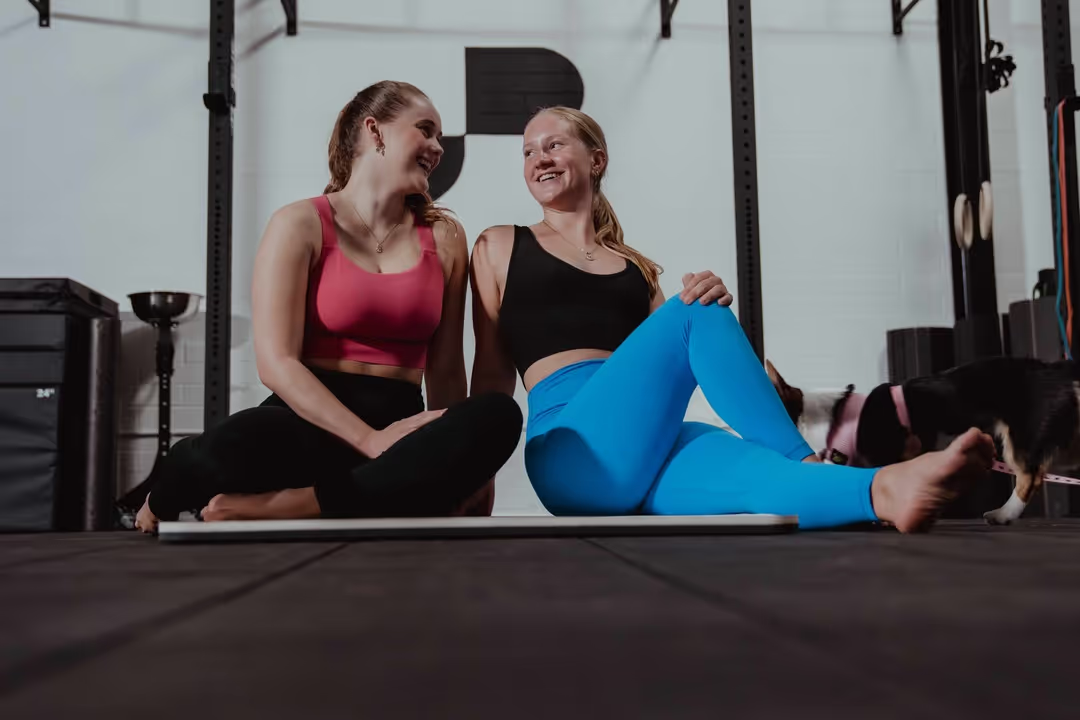
1. Improve Mobility
Incorporating thoracic spine mobility exercises in your daily mobility routine, warm-ups or cooldowns at the gym, or as forced rest during workout sets yields incredible benefits. You will begin to experience, according to Dr. Adam Bec, the following:
- Less neck pain
- Shoulder pain
- Low back pain
- Stronger and stable core
He states, “Stiff thoracic spines in strength athletes are probably the second most common underlying cause of low back injury, secondary to stiff, unstable hips."
2. Enhanced Overhead Lifting Functionality
Focusing on thoracic mobility exercises can help you with overhead lifting as it promotes better scapula movement. Hopefully, you can see why mobilizing the thoracic spine and improving your back mobility is crucial in promoting health and reducing injury risk for other areas outside the t-spine.
3. Improved Range of Motion
Improved thoracic spine mobility improves range of motion. Regularly performing thoracic mobility exercises can target the underlying causes of discomfort and stiffness, which helps you move better.
4. Less Shoulder Pain
Thoracic mobility exercises alleviate shoulder pain. The shoulder joint (glenohumeral joint) relies on proper thoracic spine function for optimal performance.
Improved thoracic spine mobility helps restore healthy movement patterns, decreasing localized shoulder pain and reducing the risk of injuries.
5. Less Lower Back Pain
Improving thoracic spine mobility can also reduce low back pain. Many individuals with chronic low back pain exhibit rigid thoracic spines. Improving thoracic spine mobility helps normalize movement and reduces the likelihood of injury to the lower back.
6. Improved Spinal Curvature
Thoracic mobility exercises promote better spinal posture and curvature. The thoracic spine is designed to have a natural curve.
When this area becomes stiff, it affects the surrounding regions, such as the cervical and lumbar spines, leading to poor posture and abnormal spinal curvatures such as kyphosis. Targeting thoracic mobility helps restore proper function and reduces the risk of injury.
7. Improved Lung Volume
The thoracic spine plays a vital role in respiration. Therefore, improving mobility in this region can help promote better breathing mechanics and increase lung volume.
A more mobile thoracic spine allows for better expansion of the rib cage during breathing, which can enhance:
- Athletic performance
- Improve recovery
Enhance Your Mobility and Performance with Pliability
If you're feeling limited by pain or ability to move, Pliability aims to complement your fitness routine and help you move better.
Sign up today to get 7 days absolutely for free on iPhone, iPad, Android, or our website to improve flexibility, aid recovery, reduce pain, and enhance range of motion with our mobility app.
How Often Should You Perform Thoracic Mobility Exercises?

Like any postural correction, change takes time and consistency. We suggest a combination of mobility work and soft tissue treatment from a local therapist. The key areas to focus on will be:
- Pec minor
- Pec major
- Lats
- Teres major
- Anterior delts
If you have poor thoracic mobility, we recommend performing thoracic mobility daily. As with all exercise, the best kind is the one that you can find time for, Dr. Smith says. “The worst thing is to do nothing,” she says. “If you can fit in five minutes of mobility work a few times a week, it will have a positive benefit.”
Related Reading
- Gowod Vs Pliability
- Tennis Mobility Exercises
- Weighted Mobility Exercises
- Cervical Mobility Exercises
- Resistance Band Mobility Exercises
- Rib Mobility Exercises
- Glute Mobility Exercises
- Best Yoga App
- Free Apps For Stretching And Flexibility
- Mobility Apps
- Stretching Apps
- Chest Mobility Exercises
- Glute Stretches
- Gluteus Medius Stretch
- Glute Stretch
- Cervical Radiculopathy Exercises
Tools or Equipment to Assist Thoracic Mobility at Hom
-min.jpeg)
Core 360 Belt: Improve Your Core Function For Better Mobility
Are you wondering how this would be under mobility exercise equipment? The belt is an active training aid designed to help you activate your core muscles better (that means more IAP/intra-abdominal pressure!) and use your diaphragm better for proper breathing.
This belt cuts the learning curve for intra-abdominal pressure. Try putting one on during 9090 breathing.
Large Mat: Create Space for Mobility Training
Who doesn’t like to be able to spread out? A large mat makes mobility exercises more enjoyable by creating a designated space for your workouts and allowing you to transition between movements without restriction easily.
Yoga Blocks: Use These For Support and Feedback
Yoga blocks help when you need some support for regression or need to use them as feedback. Most people should probably be using these to regress their 9090 positions. Use yoga blocks to help you regress your 9090 hip stretch.
Stability Ball: Use For Thoracic Mobility Exercises
We love using stability balls with Thoracic C.A.R.s by wrapping our arms around them. This helps to create tension while promoting mobility of the thoracic spine.
Resistance Bands: An Easy Way to Progress Mobility Exercises
Resistance bands are a great way to progress with mobility exercises. Our Shoulder Kinstretch Class is an excellent example of using a band for added resistance.
Ankle Weights: Add Light Resistance to Improve Mobility
We would start with the lighter weight. Strap these guys on your ankles for the range of motion you have, and build strength with the added weight.
Medicine Ball: Use to Promote Thoracic Mobility
We use medicine balls with Thoracic C.A.R.s and spinal flexion/extension. We also use these to train rotation. Use the medicine ball at the beach to train strength and mobility.
Lacrosse Ball: Great For Self Massage and Improving Tissue Mobility
Adding a ball to your grip (try the back of the knee) can help you create total body tension. It’s also great for performing self-myofascial releases. We’ll watch TV and roll out the bottom of the foot.
Indian Clubs: Promote Shoulder Mobility
These are great for shoulder mobility and allow you to add an offset weight. Here are a few options for using Indian Clubs for mobility exercises.
Slant Board: Improve Ankle Stability and Mobility
Challenge your ankle stability with endless angles. Boards are helpful for stretching before and after a workout and for strengthening the lower limb, mitigating injuries. Check out this dynamic ankle routine that uses the board.
TRX Suspension Trainers: A Great All-Around Mobility Tool
It's a great all-around system with so many options. We love this chest stretch. It’s also an excellent option for scapular training.
Improve Your Flexibility with Our Mobility App Today | Get 7 Days for Free on Any Platform
Pliability is a mobility app designed to improve flexibility, recovery, and overall range of motion. It features an extensive library of videos that show users how to perform specific mobility exercises and routines.
Personalized Plans
The app creates daily, customized routines to help you optimize your recovery. It even has a body-scanning feature to identify any limited areas in your mobility. This is especially useful if you are recovering from an injury or looking to enhance your performance in a particular sport.
If you're limited by pain or struggling with your ability to move, Flexibility can complement your existing fitness routine and help you move better.

.jpg)

.jpg)
.jpg)
.jpg)
